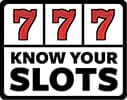In a recent article I answered a question about whether casinos value non-casino spend over casino spend. While the answer is not exactly, I thought it might be a good time to go over some of the non-casino spend aspects of a Vegas trip and what that does for your tier level.
Why Non-Casino Spending Gets You More
First off, a review about why you get more tier credits for non-casino spend. The profit margin on such spend is simply higher for a casino. We know based on casino reporting that the average slot has a house edge between 5 and 12 percent, and video poker and table games are lower than that.
By comparison, that 20 ounce bottle of soda routinely goes for between $3.50 and $4.50 a bottle, something that costs half that or even less in other places. The profit margin in shops, restaurants and more tend to be much higher. As such, that more profitable activity is going to get rewarded.
Now, most casino players wager more than just $100, so you’ll earn more points over time. Shop/restaurant spend is done once for each transaction. So by necessity the non-casino spend also needs to be boosted for parity. But sometimes it’s laughably overdone.
MGM Rewards: Watered Down From Before
The old Mlife program awarded a whopping 25 tier credits per dollar in Las Vegas, and 8 tier credits per dollar outside Las Vegas. With the relaunch to MGM Rewards, they now only award a uniform 4 tier credits per dollar on non-gaming spend (although it’s been a 2x multiplier virtually the entire year of 2022 in Las Vegas).
MGM Rewards no longer articulates how many points you earn per dollar wagered, because it varies by game. The calculation has been estimated to be 8 tier credits per dollar of theoretical loss in 2022. So actually in terms of actual money spent, for MGM Rewards you’ll probably get more out of gambling than non-gaming spend, although both together will help you build your status. And both gaming and non-gaming spend were eligible for the multiplier throughout 2022.
Caesars: Reversal of Hotel Bonus
The Caesars Rewards program is nationwide, like MGM Rewards, but is quite consistent across properties, with no regionalism going on. Most non-casino spend is 1 tier credit per $1. For awhile they awarded 5 tier credits per $1 of hotel spend, but that was reversed back to 1 tier credit per $1 more recently.
By comparison, casino earnings ranges from 1 tier credit per $5 for slots (1/25 of hotels), to 1 tier credit per $10 for video poker (1/50 of hotels), so like Mlife your non-casino spend is drastically multiplied. But unlike Mlife, that’s maintained nationwide.
For restaurants, gift shops and other non-hotel spend (including non-hotel spend billed to rooms – they can track the difference), you still get that 1 tier credit per $1. So that means $5,000 in non-casino spend to reach Platinum and $15,000 to reach Diamond.
Caesars Rewards has a tier credit bonus system based on the amount of tier credits you earn in a given day. So, if your purchases credit the same day as gambling activity, or you spend enough in a given day and it all hits at once, you could benefit from a bonus.
Other Casinos on the Strip
The spend/non-spend divide is similar at other properties on the Las Vegas Strip:
- The Cosmopolitan of Las Vegas will eventually be folded into MGM Rewards, but for now the Identity program offers $2.50 per point earned on slots, and $6 per point on Video Poker. You can earn 2x or 3x points at higher tier levels. But non-gambling spend earns at 5 points per $1.
- Tropicana Las Vegas is linked to the mychoice program, which earns you 1 tier credit for every $5 in slots or $10 in video poker. Unusually, you also only earn 1 tier credit for every $5 spend on non-gambling purchases. So here, at least, there is a parity between gambling and non-gambling activities. But it is an outlier.
- Venetian/Palazzo has an unusual earning policy where you earn points based on theoretical loss and status tier. But you earn between 5 and 20 points per $1 of resort spend. Gambling earnings are between 10 and 20 points per dollar of theoretical loss, which isn’t the same as wagers. Theoretical loss is equivalent to the house edge, which on slots can be (generally speaking) between $5 and $12 for every $100 wagered. So that would mean between 50 and 120 points for every $100 in bets (which you could win or lose, of course), vs. between 500 and 2000 for every $100 in spend.
A Few Off-Strip Examples
Let’s go off strip for other more prominent examples:
- Station Casinos have the My Boarding Pass program, and you earn a point for every $1 wagered on slots or video poker. You earn 10 points for every $1 spent on non-resort spending (except a buffet, which is 5 points per $1).
- Boyd Casinos has the B Connected program, and you earn $5 per slots and a variable amount on video poker and table games. They do not list point earnings for non-gaming spend. (You also don’t earn comp dollars until you reach their second tier.)
- Golden Nugget also only lets you earn tier credits and comp dollars for gaming spend; it’s $3 per tier credit for slots, $10 per tier credit for video poker. For comps it’s slightly different at $4 per point for slots, $10 per point for video poker.
- Plaza Las Vegas earnings are from gaming only. It’s 1 tier credit per $1 on slots, or $3 on video poker.
As always, it helps to know your various comp programs, at the very least for the properties you visit often. But for properties that give you credit for non-gaming spend, be sure to show your card to get credit.








